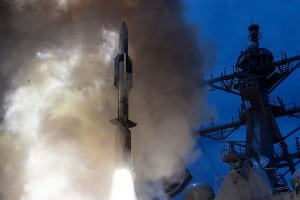
The Missile Defense Agency last week successfully conducted a series of four flight test events exercising the Aegis Ballistic Missile Defense (BMD) element of the nation’s Ballistic Missile Defense System (BMDS), according to an agency statement.The flight test, designated Multi-Mission Warfare (MMW) events 1 through 4, demonstrated successful intercepts of short-range ballistic missile and cruise missile targets by the USS John Paul Jones, configured with Aegis Baseline 9.C1 (BMD 5.0 Capability Upgrade) and using Standard Missile (SM)-6 Dual I and…











